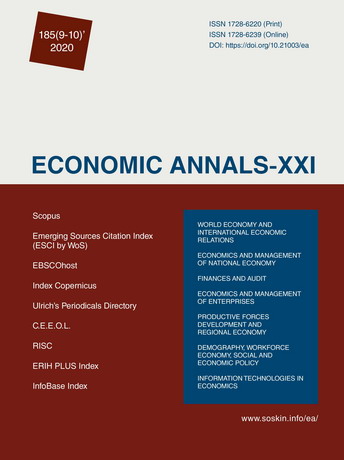Environmental risks and sustainable development indicators: determinants of impact
Environmental risks and sustainable development indicators: determinants of impact
Author(s): Oleksandr Sushchenko, Ievgen Volkovskyi, Viktor Fedosov, Nadiya RyazanovaSubject(s): Economy, Energy and Environmental Studies
Published by: Institute of Society Transformation
Keywords: Sustainable Development; Environmental Risks; Blended Value Creation; Human Development Index; Environmental Performance Index;
Summary/Abstract: The concept of sustainable development brought new constraints for the old-fashioned business models. At the same time, it created new opportunities for those who have a forward-looking strategy and strive to overcome «the limits to growth», in other words, to ensure a long-term blended value creation with economic and non-economic benefits. There are numerous sets of the sustainable development indicators and indices, but the weights of each particular component are different and need further clarification. Nowadays, the environmental risks in general and climate-related in particular are priced (e.g. environmental taxes) and have a strong impact on the social and economic relations by creating negative and positive externalities for our daily life. For this reason, economic agents are forced to become sustainable to the non-financial risks through switching to the new environmental and social business models. For this reason, better sustainable development indicators are crucial for an improved management of the non-financial risks and sustainable blended value creation. Hence, the aim of this paper is to examine the role of environmental risks in shaping sustainable development conditions on the macrolevel and to elaborate the ways for a better management of the non-financial risks (Environmental, Social and Governance - ESG). For this purpose, the impact of the most important environmental risks on the main economic and social indicators has been examined (e.g. Human Development Index and GDP per capita). Such an approach allowed us to identify the extent to which specific environmental factors influencing social and economic development can reshape the sustainable development conditions. In course of research, two sets of countries have been singled out to verify statistical significance of elaborated models. To achieve this goal, the authors have split an available dataset into two groups: EU and non-EU countries. The reason behind it is the fact that EU countries are among the leaders in the area of sustainable development and have already undertaken related environmental improvements in the last decades. Moreover, the above-mentioned countries are continuing such successful pathways today and with the new European Green Deal could go even far beyond this frontier. The results of current research suggest that existing indicators cannot fully encompass all the aspects of sustainable development and should be revised. Such findings relate both to the composition of the indicators and the weights attributed to each particular component. The application of regression analysis showed that such factors as water and air quality and biodiversity have the strongest explanatory power - 67% of the fluctuations in GDP per capita and 87% in case of HDI. The R -squared is ranging from 0.7 to 0.8 in both cases and confirms consistency of the elaborated models. To verify the results achieved, the similar models have been prepared only for the EU countries. As a result, all independent variables demonstrated the same significant impact on GDP per capita also for the EU countries. However, in this case the R -squared is only 0.27 due to the fact that ESG indicators within the EU area are rather homogenous. The impact of environmental factors on the level of HDI for the EU countries is much stronger comparing to GDP per capita. An overall explanatory power of the model for the EU countries exceeds 0.45 (R -squared). The most influential factor is the quality of water resources. Other important independent variables in the model for the EU member states are biodiversity and air quality. The authors argue that it is necessary to incorporate the above-mentioned environmental factors into the updated version of the Human Development Index as the most appropriate indicators of sustainable development. Consequently, the weights of the components should be recalculated to improve management of the non-financial risks on macrolevel, facilitating the blended value creation process.
Journal: Економічний часопис - ХХІ
- Issue Year: 185/2020
- Issue No: 9-10
- Page Range: 4-14
- Page Count: 11
- Language: English

